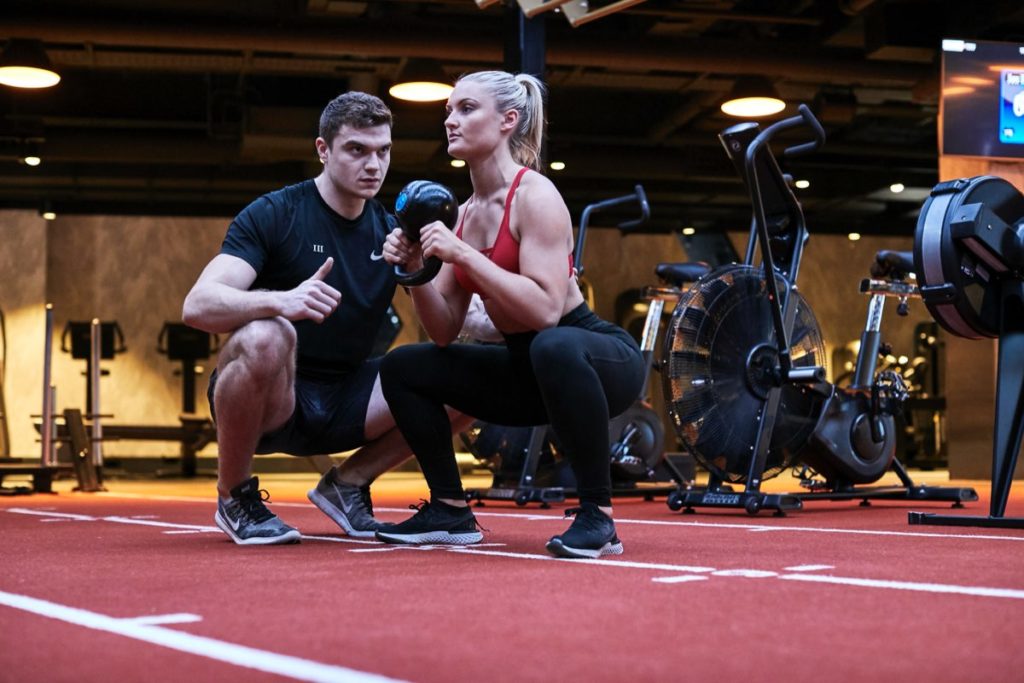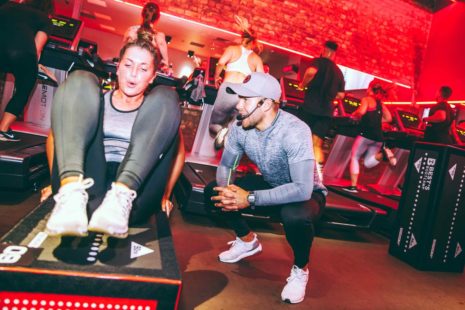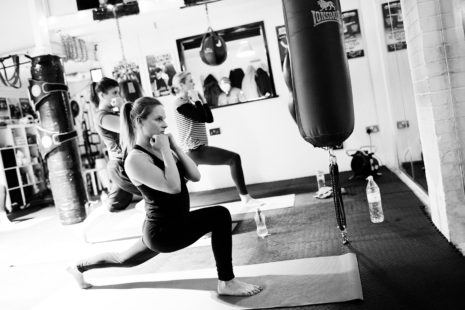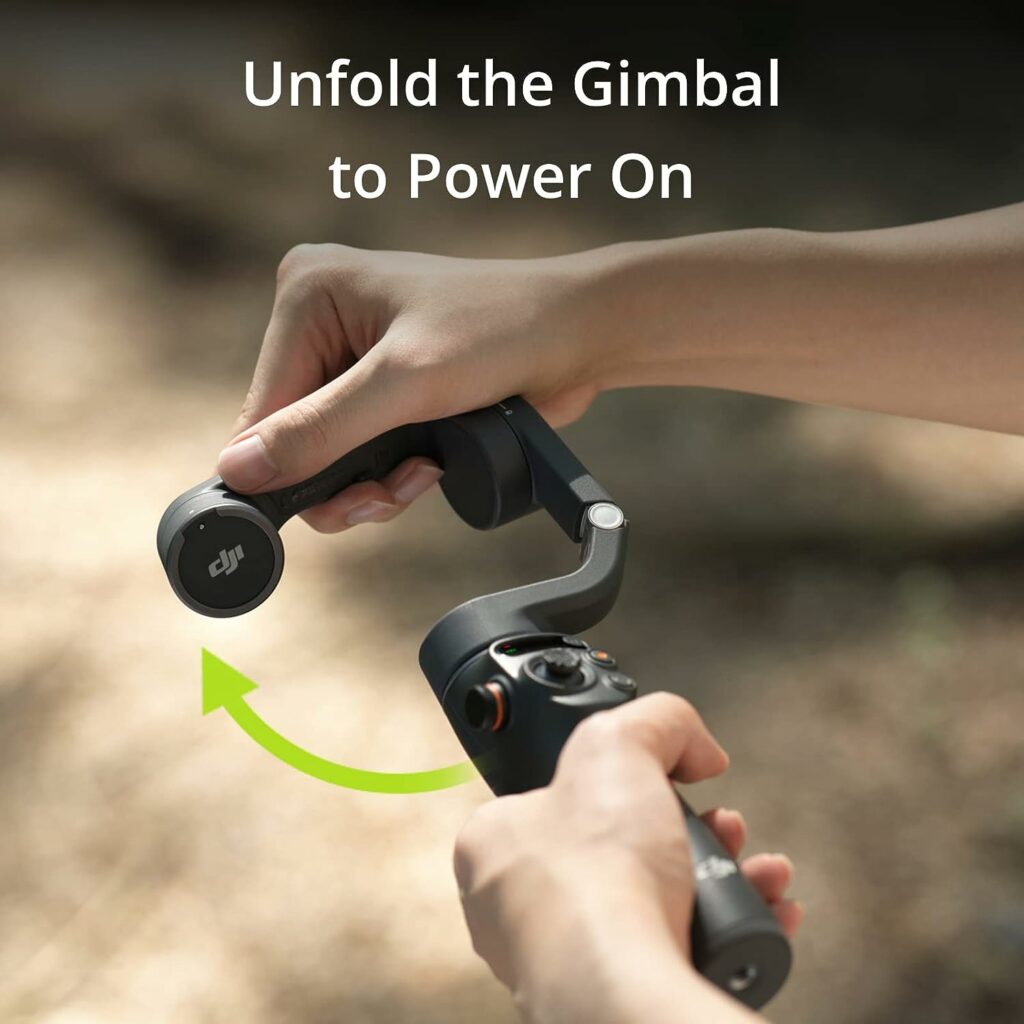Squats are one of the best butt-toners and will help grow that peach – but only if you use the proper form. Plus activating your glutes before you workout is the best thing you can do to prevent sore knees, quads and hamstrings. We asked Josh Silverman, head of education at Third Space, for some pointers…
Ankles and feet
Some people will find that facing their toes forward limits their range in a squat. If that’s the case for you then try to put your feet in a 10/2 position: imagine you are standing on a clock and your left foot is facing toward 10 o’clock and right foot facing toward 2 o’clock. The further you rotate your feet outwards around the clock, the less ankle mobility you need, which may give you more depth and better stability. If you have low ankle mobility, buying a pair of lifting shoes or adding a squat wedge beneath your ankles may help you to get more depth.
You also want to set your feet in ‘tripod position’ to distribute the weight as evenly as possible to give you a good base of support: consciously push through your big toe, heel and outside edge of your foot.
Knees
You should ideally stay within the ‘plane’ you are moving through in order to prevent unwanted movement which may result in an injury. In layman’s terms, this just means preventing the knees from caving in or pushing out. You also want to ‘break at the knees’ at the same time as the hip: it’s common for people to push their bum up first which takes them out of alignment.
Hips
In an ideal world, the depth of the squat should be at least 90 degrees at the hips (hips in line with knees) or lower. As soon as you see butt wink (this is where you start to see your pelvis curl underneath you) you have hit your depth. You want to imagine you are sitting down rather than sitting back, which will keep your hips in a position where your torso stays upright. If you find you can’t go deeper, try rotating your feet out as this can help to create space for the hips.
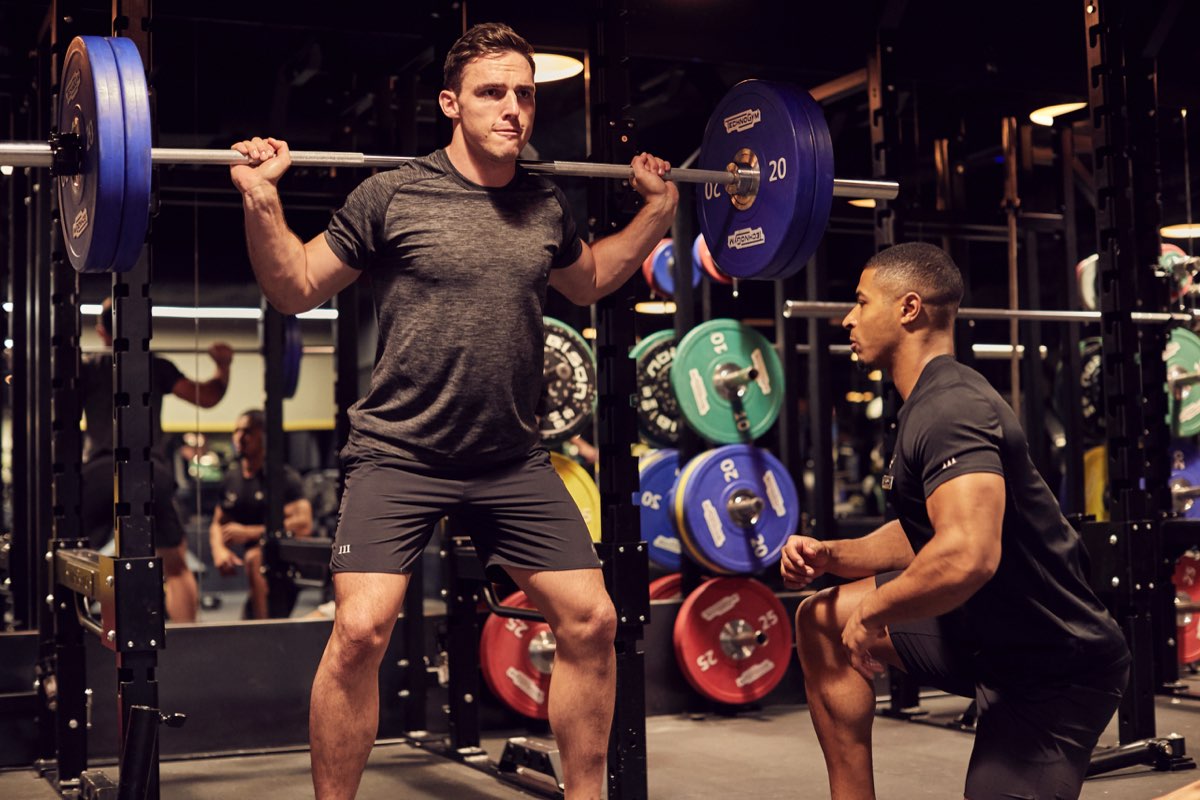
Torso
Your torso should be at least parallel with your shins, which will mean your ankles and hips need to at the same angle. What you want to avoid is ‘folding’, which in essence is leaning too far forward. If you are able to achieve a more horizontal position with your torso then that’s great.
Shoulders
If you are using a bar for a back squat, it needs to be placed on top of your shoulder blades to ensure you are safe and strong throughout the movement. Firstly pull your shoulders back and you should see a muscle push out above your shoulder blades, which is the trapezius. You will notice it makes a really nice shelf for the bar and that is where it should be placed – not on your neck. Find a hand position on the bar where it feels comfortable and stable, which is generally just outside of shoulder width.
Head
Keep the neck neutral with eyes facing forward for a neutral spine and to avoid any unwanted niggles.
Summary
There is no ‘perfect squat’ but there is a perfect squat for you. Although the above points might seem complicated, the general rule of ‘if it feels good, it’s right’ usually applies.
Get your weekly DOSE fix here: SIGN UP FOR OUR NEWSLETTER
